- Home
- Dan Simmons
Black Hills Page 8
Black Hills Read online
Page 8
Robinson looks up from the notes.
—Did the Sioux and Cheyenne used to race there?
—Before the Lakota and Cheyenne, Mr. Robinson. This may have been before the First Man and his cousins came up into the world through Washu Niya, “the Breathing Cave.” The Park Service calls it Wind Cave.
—Yes, yes. I’ve long heard that the Cheyenne and Sioux and other Plains Indians believe that humans came into the world through Wind Cave. But why is it called “the Breathing Cave” rather than “the Birthing Cave” or somesuch?
—Because in the winter you can see the cave breathe through its various orifices. The warmer air comes out as regular breaths, almost identical to the breathing of a buffalo.
—Ahhh…
Robinson scribbles away at his notes. Paha Sapa concentrates on keeping the broad-beamed Nash on the frozen mud ruts of the road. He turns right onto the Needles Highway. The Nash’s engine is up to the climb, but the car’s gearbox is putrid—not nearly as good as the Fords and Chevies Paha Sapa has driven—and he has to take care not to grind the gears of the historian’s beloved new car.
Robinson looks up, and the sunlight gleams on his round glasses.
—Did the buffalo and the humans enter the world at the same time, Billy? I’ve heard different reports on that.
—The buffalo came first. The first buffalo that emerged from Washu Niya were tiny—the size of ants—but the grass in the Black Hills was so rich that they quickly grew and fattened to their present size.
Paha Sapa smiles at this, but Doane Robinson earnestly continues his note taking. When he finally looks up, he blinks at the approaching Needles formations as if he’s forgotten they were in the Black Hills. The late-December sun is bright but weak, the shadows from the rock columns tenuous. Robinson taps his fountain pen against his lower lip.
—So who raced on the Race Track if people weren’t yet in the Hills?
Paha Sapa shifts gears to go down a grade. The Nash’s clutch does not engage until the driver’s boot is almost against the drafty floorboards. Someday, Paha Sapa knows, the Needles Highway will be paved, but now it is a mass of frozen deep ruts that could high-end Mr. Robinson’s Nash in a second if the narrow wheels slide off the high ridges.
—The story goes that the winged and four-legged creatures of the world were competing to rule the world. They came close to warring to decide this, but finally decided to hold a Great Race around Wamakaognaka e’cantge.
Robinson pauses in his note taking. When he speaks, his breath hangs in the air a moment as if the Breathing Cave were breathing here, only here their breath is also icing up the inside of the windshield and already-frosted side windows.
—Wamakaognaka e’cantge—that means “Center of the Universe,” doesn’t it, Billy?
—Among other things. I prefer to hear it as “the heart of everything that is.” But it all means Paha Sapa—the Black Hills.
—So the four-leggeds and the flying creatures agreed to decide who would rule the world based on a race around the Black Hills?
The pen scratches. There is no other traffic on the road this New Year’s Eve day. Beyond the thrust of the Needles, Paha Sapa can see the highest and most sacred mountain in the Black Hills, Evil Spirit Hill, which the wasichu have renamed Harney Peak to honor a famous Indian killer, and beyond Evil Spirit Hill, the long granite ridgeline of the Six Grandfathers, where he had his Vision forty-seven years earlier.
—Yes. There are different versions of the story, but in the one my grandfather told me, the flying creatures put on magic colors to help them win the race. Thus the crow first painted himself black, the magpie used white earth and charcoal to make himself wakan—
—Holy. Sacred.
—Yes. The meadowlark trusted in yellow to allow him to win. So the four-leggeds and the two-leggeds, who were all flying creatures then but who agreed to keep their feet on the ground for this Great Race, rushed ’round and ’round the Black Hills a hundred, a thousand times, wearing down the ground there into today’s Race Track. The buffalo and deer were the fastest of the four-leggeds, and the bloody froth that poured from their mouths and noses stained the rock red almost all the way around. They raced through days and nights and weeks and moons.
—Who won?
—Magpie and Crow won, running on behalf of all two-leggeds, including us people who hadn’t yet crawled up through the Breathing Cave. And by then the Race Track was as wide and deep and red rimmed as you see it now. Actually, my grandfather had another name for the red-rimmed oval that surrounds the Wamakaognaka e’cantge.
—What was that, Billy?
—Winyaˇn shan.
—Odd. For all my years recording Sioux words, I’ve never encountered that one. What does it mean, Billy?
—Cunt.
Doane Robinson screws the top on his fountain pen, removes his glasses, and cleans them with the handkerchief from the breast pocket of his thick wool suitcoat. Paha Sapa can see the line of red along the historian’s cheekbone and is sorry that he’s embarrassed the older man.
—Pull over here, please. At that turnout at the base of that column.
Paha Sapa stops the Nash. The dirt road here winds among the Needles—freestanding pillars of granite, some a hundred feet and more tall but most rising forty or fifty feet—and this turnout is to allow motorists to admire this particular fat finger of stone that rises immediately next to the shoulder of the road.
Robinson is fumbling with his new-styled door handle.
—Shall we get out, Billy?
—The wind’s come up, Mr. Robinson. It’s cold out there.
—Come, come. We’re only young once. I want to show you something.
It is colder than Paha Sapa guessed. This part of the narrow road has been cut along the ridgeline, and there are no high peaks in the way to block the freezing wind blasting across the Hills from the northwest. Paha Sapa buttons his black-and-red wool coat and notices the blue-black storm clouds along the horizon far to the northwest. There will be a blizzard rolling in by midnight on this New Year’s Eve. He calculates the time it will take to get Robinson back to his home and to ride back to his own home near Deadwood on the motorcycle. It will not be a night when he wants to be on that narrow, winding mountain road in a blizzard in the dark—especially since the motorcycle has no headlight.
Doane Robinson is gesturing to the Needle column.
—You’ve noticed, Billy, that there are dozens upon dozens—scores!—of these pinnacles within the newly established park.
—Yes.
—And you know of the Black Hills and Yellowstone Highway?
—The Black and Yellow Trail. Sure. We followed the painted bumblebee posts out of Rapid City and up into the Hills.
Paha Sapa thinks of the crude dirt—only occasional gravel—mainauto road that now cuts east and west across South Dakota and that the wasichu grace with the proud name of “highway.” The black-and-yellow-striped roadside posts stretch across the prairie seemingly to infinity.
—The highway connects Chicago to Yellowstone Park and was meant to bring tourists to the West, Billy. South Dakota’s future will depend upon tourism, mark my words. If the economy stays this good, everyone in America will own a car someday and everyone will want to leave those crowded warrens in the eastern and midwestern cities and come out to see the West.
Paha Sapa pulls his collar up against the freezing wind battling them. Doane Robinson’s blush has been replaced with patches of red and white on his cheeks and nose, and Paha Sapa realizes he’ll have to get the historian back in the idling car soon before the intellectual allows himself to get frostbitten. The man’s not even wearing gloves on this subzero day. When an especially vicious gust threatens to tumble Robinson off the frozen dirt of the road down into the underbrush at the base of the granite column, Paha Sapa steadies him with a strong grip on his upper arm.
—Have you ever been to Chicago, Billy?
—Yes. Once.
Paha S
apa can still see Mr. Ferris’s great Wheel rising above the White City at night in 1893, everything bathed in radiance by the thousands of electric lights. The authorities of the Chicago Columbian Exposition had decided that Buffalo Bill’s Wild West Show lacked the proper dignity to be a recognized part of the Fair, so Mr. Cody had set up his show just outside the fairgrounds proper, thus drawing huge crowds while not having to share the profits with the Fair organizers. But the White City, with its huge Electricity Building and Machinery Building—the entire Court of Honor illuminated by those hundreds of electrical streetlights and spotlights through the bustling night—was one of the most amazing things the twenty-eight-year-old Paha Sapa had ever seen.
—You have? Well, you can imagine then why the denizens of that overcrowded town are waiting and wanting to travel west and to breathe our clean air and to see our amazing sights. But South Dakota needs an attraction!
—An attraction?
—Yes, yes. It occurred to me only a few weeks ago that while Yellowstone Park has its geysers and its grizzly bears and its hot springs, certainly enough to bring someone out along the Black and Yellow Highway from Chicago or points farther east, the only attraction that our fair state has to offer the intrepid voyager is the park here in the Black Hills… and all the Hills have to offer are… well… hills.
Paha Sapa can only stare at the state historian. Mr. Robinson’s eyes are watering from the cold and his nose is running copiously. Every time a new gust hits them, only Paha Sapa’s firm grip keeps the larger and older man from being blown down the hill and into the lodgepole pines and Douglas firs that cluster between the bases of the Needles columns. Paha Sapa can see from the shadows thrown that it’s getting late—they will have to leave soon if he has any chance of getting to Deadwood before full darkness falls and the blizzard arrives. The air now smells of the approaching snow.
Robinson extends his free arm and opens his bare fingers in the direction of the granite spire.
—And then it struck me, Billy. Voilà! Sculptures!
—Sculptures?
Paha Sapa can hear how idiotic his repetition sounds, even though he rarely cares how he sounds in so un-nuanced a language as English.
—These spires would be perfect for carving, Billy. I am quite sure that granite is the finest of all carving stone. So a couple of days ago, I wrote this letter to the foremost sculptor in America… perhaps in the world!
Robinson fumbles in his inner pocket, under his blowing topcoat and wind-ballooned suitcoat, and comes out with a carbon copy of a typewriter-typed letter. A gust rips the flimsy paper out of Robinson’s right hand, and only a lightning-fast lunge by Paha Sapa keeps the letter from disappearing forever into the forest.
—We should read this and talk in the car, Mr. Robinson.
—Quite right, Billy. Quite right. I don’t believe I can feel the tips of my ears or nose!
Back in the Nash, Paha Sapa tries to turn up the car’s primitive heater, but it’s already putting out what little heat from the engine it deigns to share. He unfurls the now-crumpled letter over the top of the broad steering wheel and reads:
December 28, 1923
Mr. Lorado Taft
6016 Ellis Avenue
Chicago, Illinois
My Dear Mr. Taft:
South Dakota has developed a wonderful state park in the Black Hills. I enclose a brochure illustrating some features of it. On the front cover you will observe some pinnacles—we call them needles—situated high upon the flank of Harney Peak. The tops of those shown are more than 6300 feet above sea level. These needles are of granite.
Having in mind your “Big Injun,” it has occurred to me that some of these pinnacles would lend themselves to massive sculpture, and I write to ask if in your judgment human figures might be carved from some of them as they stand. I am thinking of some notable Sioux such as Red Cloud, who lived and died in the shadow of those peaks. If one was found practicable, perhaps others would ultimately follow.
Pinnacles could be found immediately above the highway shown, that stand fully one hundred feet in the clear, above pedestals hundreds of feet in height, as seen from the other points of vantage.
This granite is of rather coarse texture, but it is durable. There are also in the vicinity great blank walls upon which groups in relief could be executed advantageously.
The needles shown are only suggestive of the field, many others are trimmer—only a few feet in diameter—and exceedingly showy.
I shall be pleased to hear from you, and if it appears practicable we can, perhaps, induce you to come and look us over.
Faithfully,
Doane Robinson
PAHA SAPA DRIVES THEM BACK toward Rapid City as fast as the Nash’s skinny tires will carry them on the frozen roads. He doesn’t ask Mr. Robinson if Lorado Taft, the sculptor, has responded to the letter yet, since there has hardly been time for that. He drives in silence except for the banging four-cylinder engine and the loud but heatless burr of the heater fan.
—What do you think, Billy?
Paha Sapa likes Doane Robinson; he likes the man’s gentleness and learning and sincere interest, however poorly focused, in the history of Paha Sapa’s people. And he loves Doane Robinson’s library and the new look at the universe it has given him. But at that moment, he also thinks that if Robinson had shown him the letter to the sculptor before he mailed it, Paha Sapa would have used the simple bone-handled jackknife with the five-inch blade now in his pocket to cut the writer-historian’s throat, leaving his body in the woods along the Needles Highway and his Nash in a ravine somewhere many miles away in the Black Hills.
—Billy? What do you think of the idea? Do you think Red Cloud would be the choice for the first Sioux leader to be carved into one of the pinnacles? Did you know Red Cloud?
Makhpiya Luta, Red Cloud, was famous for his victory in the Battle of the Hundred Slain, but all that fighting had ended by the time Paha Sapa was two summers old. Paha Sapa knew old Red Cloud primarily as an agency Indian, someone who had surrendered the plains and lands of the last Natural Free Human Beings, and Paha Sapa was near the Red Cloud Agency at Camp Robinson in 1877 when a jealous nephew of Red Cloud’s betrayed Crazy Horse, bringing him back to the fort to be murdered. Red Cloud outlived all the real warrior chiefs—Sitting Bull, Crazy Horse—dying as an old, old man only fourteen years earlier in 1909.
—I didn’t really know Red Cloud.
—What about Crazy Horse, then, Billy? Do you think it would be appropriate if Mr. Taft sculpted a huge statue of T’ašunka Witko here in the Hills?
Paha Sapa grunts. Here on the east side of the ridgelines, the evening shadows are growing quickly and he has to drive extra carefully to keep the Nash from breaking an axle in one of the deep, frozen ruts. How can he tell this gentle man that Crazy Horse would have preferred to pull his own guts out through a hole in his belly—or to slaughter Doane Robinson’s entire extended family—rather than allow the wasichus who betrayed and killed him to carve a likeness of him into Paha Sapa granite? He takes a breath.
—You remember, Mr. Robinson, that Crazy Horse never allowed any of the frontier photographers to take a photograph of him.
—Ah, you’re right, of course, Billy. He was obviously afraid of the camera “capturing his soul,” as some of the Plains Indians feared. But I’m quite sure that a sculpture created by a great artist would not have offended T’ašunka Witko’s sensibilities in that way.
Paha Sapa knows beyond any doubt that Crazy Horse had no fear of a camera “capturing his soul.” The warrior simply would never give his enemy the satisfaction of capturing even an image of him.
—What about Sitting Bull, then, Billy? Do you think the Lakota would be honored if there was a monumental sculpture of Tatanka Iyotake here in the Hills?
The highway is especially churned up into ridges and gulleys here, a Badlands in miniature, and Paha Sapa stays silent as he bounces the Nash across the least threatening patch of frozen road and shou
lder. He remembers the time, only nine years after the rubbing out of Long Hair at the Little Big Horn, when Sitting Bull traveled east with Bill Cody’s Wild West Show—this was eight years before Paha Sapa went to Chicago with the same troupe—and was so impressed by the numbers and power of the wasichus and by the size of their cities and the speed of their railroads. But Paha Sapa spoke to a missionary who had known Tatanka Iyotake upon his return to the agency, and Sitting Bull had said to the white holy man—The white people are wicked. I want you to teach my people to read and write, but they must not become white people in their ways of living and of thinking; it is too bad a life. I could not let them do it. I myself would rather die an Indian than live a white man.
Paha Sapa finds it difficult to breathe. There is a wild pounding on the inside of his rib cage and a pressure of pain in his skull that blurs his vision. Another man might think it was a heart attack or stroke happening to him, but Paha Sapa knows that it is the ghost of Long Hair gibbering and capering within him, pounding to get out. Does Long Hair hear these words through Paha Sapa’s ears, see the Needles columns through Paha Sapa’s eyes, and imagine the large sculptures of the Lakota men mentioned—Robinson has certainly not mentioned Custer for one of the sculptures—by seeing into Paha Sapa’s mind?
Paha Sapa does not know. He has asked himself similar questions many times, but although the ghost speaks to him nightly, he has no clear idea as to whether Long Hair sees and hears through him or shares his thoughts the way that Paha Sapa is cursed to suffer Long Hair’s.
—Did you know Sitting Bull, Billy?

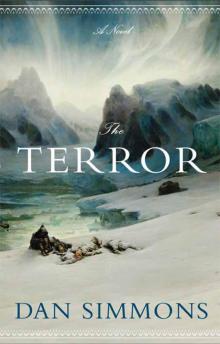 The Terror
The Terror Endymion
Endymion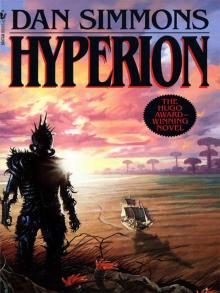 Hyperion
Hyperion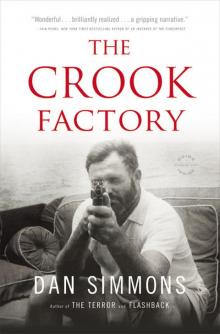 The Crook Factory
The Crook Factory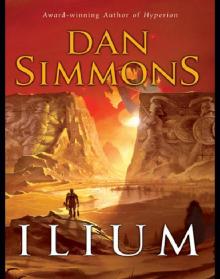 Ilium
Ilium Phases of Gravity
Phases of Gravity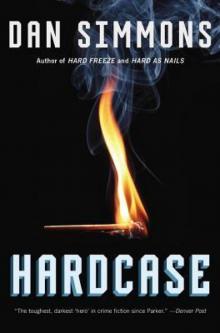 Hardcase
Hardcase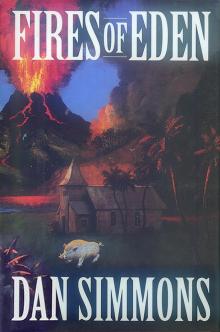 Fires of Eden
Fires of Eden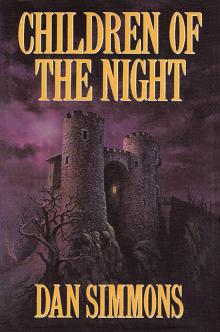 Children of the Night
Children of the Night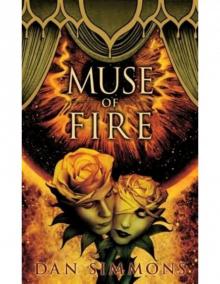 Muse of Fire
Muse of Fire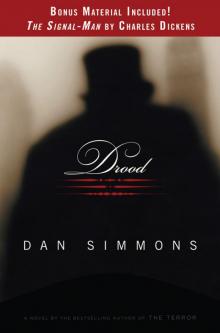 Drood
Drood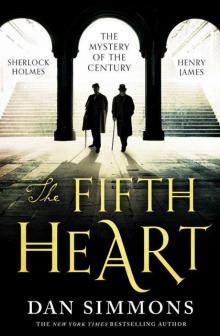 The Fifth Heart
The Fifth Heart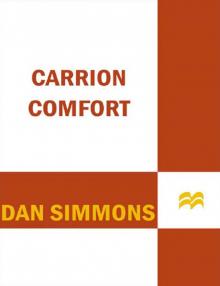 Carrion Comfort
Carrion Comfort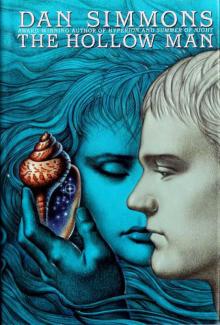 The Hollow Man
The Hollow Man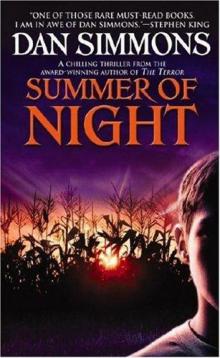 Summer of Night
Summer of Night The Fall of Hyperion
The Fall of Hyperion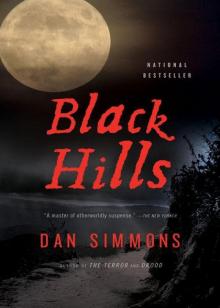 Black Hills
Black Hills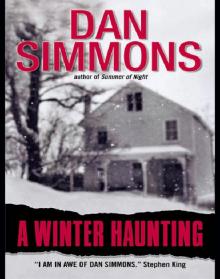 A Winter Haunting
A Winter Haunting Hard Freeze
Hard Freeze Prayers to Broken Stones
Prayers to Broken Stones Hard as Nails
Hard as Nails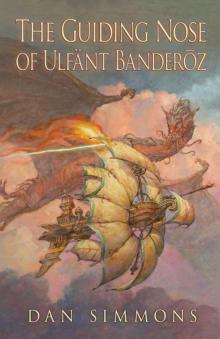 The Guiding Nose of Ulfant Banderoz
The Guiding Nose of Ulfant Banderoz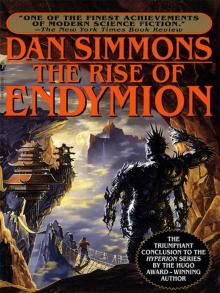 The Rise of Endymion
The Rise of Endymion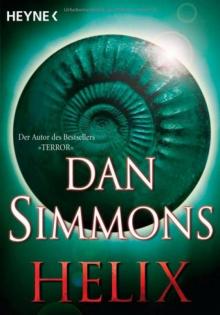 Orphans of the Helix
Orphans of the Helix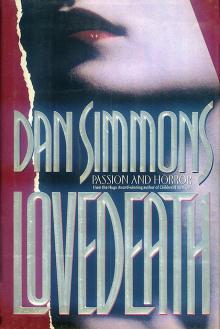 Lovedeath
Lovedeath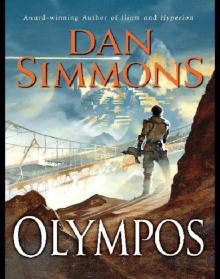 Olympos
Olympos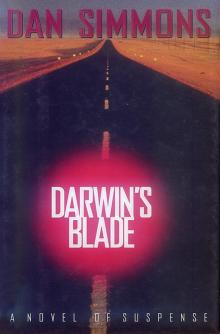 Darwin's Blade
Darwin's Blade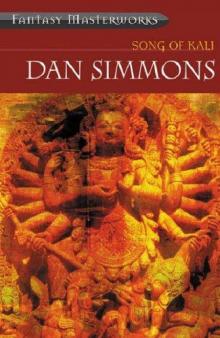 Song of Kali
Song of Kali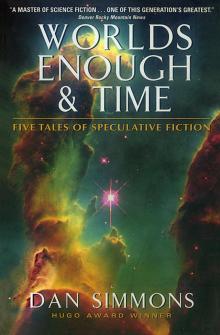 Worlds Enough & Time: Five Tales of Speculative Fiction
Worlds Enough & Time: Five Tales of Speculative Fiction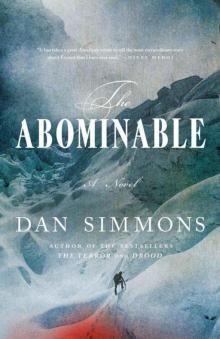 The Abominable
The Abominable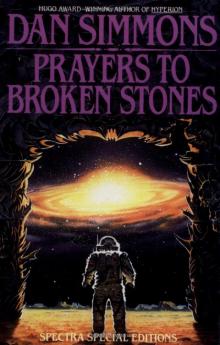 The Death of the Centaur
The Death of the Centaur Hard as Nails jk-3
Hard as Nails jk-3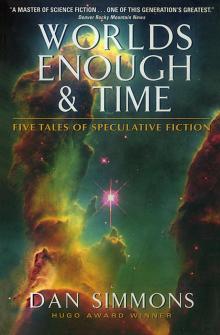 Worlds Enough & Time
Worlds Enough & Time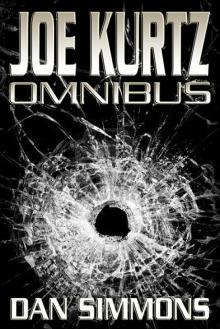 Joe Kurtz Omnibus
Joe Kurtz Omnibus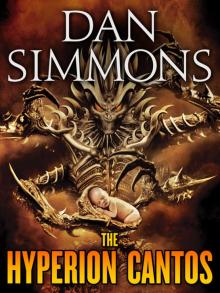 The Hyperion Cantos 4-Book Bundle
The Hyperion Cantos 4-Book Bundle Rise of Endymion
Rise of Endymion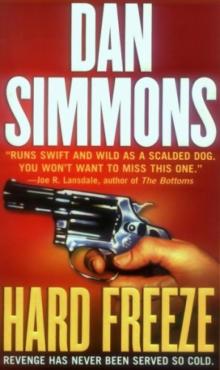 Hard Freeze jk-2
Hard Freeze jk-2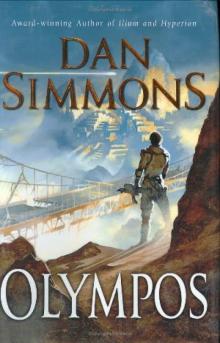 Olympos t-2
Olympos t-2 The Abominable: A Novel
The Abominable: A Novel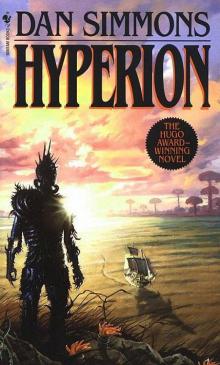 Hyperion h-1
Hyperion h-1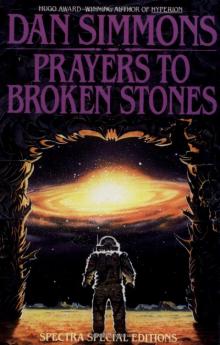 Remembering Siri
Remembering Siri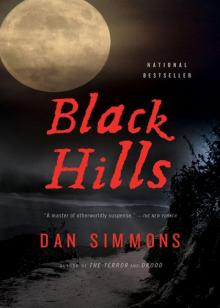 Black Hills: A Novel
Black Hills: A Novel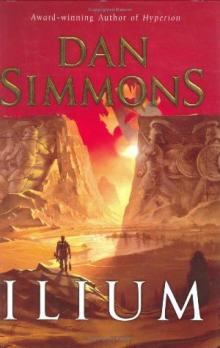 Ilium t-1
Ilium t-1 Hardcase jk-1
Hardcase jk-1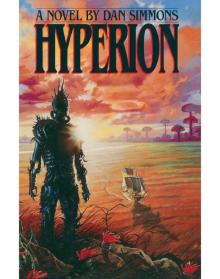 Hyperion 01 - Hyperion
Hyperion 01 - Hyperion